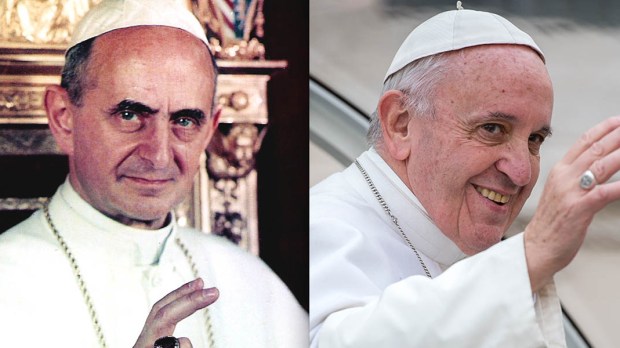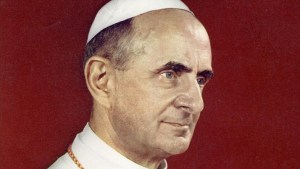On November 24, 2013, Pope Francis published the first major text of his pontificate, the exhortation Evangelii Gaudium (The Joy of the Gospel). Ten years on, we can reread it as a programmatic text.
It lays out the central framework of his pontificate: Evangelization and its social dimension, the rejection of all elitism, and attention to the people of God, especially those most in need. The document also placed his pontificate in continuity with the Second Vatican Council and the pontificate of Paul VI, more than those of John Paul II and Benedict XVI.
The priorities of Francis’ pontificate
While the first magisterial document credited to Francis’ pontificate was the encyclical Lumen Fidei (July 2013), actually written “four-handed” with his predecessor Benedict XVI, the apostolic exhortation Evangelii Gaudium, published at the end of the Year of Faith, was Pope Francis’ first truly personal text. Rather than elaborating upon the work of the Synod on the New Evangelization held in the Vatican a year earlier, the new Argentine pope used this text to outline the priorities of his pontificate.
Following in the footsteps of the 2007 Aparecida document, which set out a roadmap for the Latin American Church by tracing a link between Christian faith and service to the poor, Pope Francis developed in Evangelii Gaudium a reflection accessible to the general public on the major challenges facing the Church. Addressed “to bishops, priests, and deacons, consecrated persons and the lay faithful,” the text focuses on “the proclamation of the Gospel in today’s world.” It includes numerous references to the Second Vatican Council.
The Pope rejects certain “progressive” demands that may have emerged at the start of his pontificate. He clearly expresses his refusal of any change in Church doctrine on abortion and on women’s access to the priesthood. He does, however, reflect on the “eternal newness” of proclaiming the Gospel, giving it a social dimension. In this text, he stresses the Church’s responsibility to fight against the “idolatry of money” and to listen to the poor.
An outgoing Church fed by the faithful’s personal relationship with Christ
Against the conditioning induced by consumer society, which feeds an individualistic sadness, Pope Francis emphasizes the importance of a personal encounter with Jesus.
“Those who accept his offer of salvation are set free from sin, sorrow, inner emptiness, and loneliness,” Pope Francis says in his introduction. Developing the theme of “a Church which goes forth,” which will be a constant in his pontificate, the Pope invites us to a “missionary conversion” that no longer places priests and consecrated persons at the center of the attention of theologians and the magisterium, but the people in all their diversity.
“The people of God is holy thanks to this anointing, which makes it infallible in credendo. This means that it does not err in faith, even though it may not find words to explain that faith,” writes the Pope. Francis denounces all forms of elitism and, on the contrary, highlights the faith of simple people and “the evangelizing power of popular piety,” which must not be underestimated. “Once looked down upon, popular piety came to be appreciated once more in the decades following the Council,” remarks Francis, who salutes the role of Paul VI in this rehabilitation of popular piety.
This text sheds light on the link between Francis and the Italian pope who reigned from 1963 to 1978. The Argentine pontiff built his exhortation as a continuation of Evangelii Nuntiandi, Paul VI’s last major text, published on December 8, 1975. This was exactly 10 years after the conclusion of the Second Vatican Council, and at the end of the highly successful 1975 Holy Year.
Daring to evangelize, even and especially in times of crisis
The decade following the Council was a period of identity crisis for the Church. Some in the Church questioned the very meaning of mission and proclamation of the Gospel, not least because the processes of decolonization had destabilized certain missionary congregations associated with European countries.
However, Pope Paul VI drew on the work of the 1974 Synod on Evangelization to publish a more incisive document than expected, reviving the missionary dimension of the Church. In it, the Pope reiterated the “need for explicit proclamation” in the name of “Christ, the first evangelizer,” including proclamation to a “de-Christianized world.”
In his biography Paul VI, le souverain éclairé (Cerf, 2015), after evoking the crisis of the years 1968-1974, historian Philippe Chenaux presented “the unexpected success of the 1975 Holy Year and the great texts on Christian joy and the proclamation of the Gospel” as essential interpretative keys for reassessing the legacy of this Italian pope. Indeed, Paul VI was subsequently somewhat eclipsed by the long and spectacular pontificate of John Paul II, which lasted over a quarter of a century.
Paul VI and Francis, a spiritual filiation
“We must always return to Paul VI,” Pope Francis told French Cardinal Paul Poupard during a private conversation. Jorge Mario Bergoglio didn’t know Paul VI personally. However, his pontificate spanned the end of his Jesuit training, his ordination to the priesthood in 1969, and his difficult experience as provincial of the Argentine Jesuits starting in 1973. Thus, Paul VI’s pontificate indeed marked and structured the thinking of the future Pope Francis.
Since 2013, like Paul VI in the 1970s, Pope Francis has been confronted with the risk of fragmentation of Catholicism. In today’s world, the circulation of people and ideas is accelerating at the risk of relativism or, conversely, a clash of civilizations. But beyond the ideological tensions that are often difficult to channel, these two popes seek above all to return to the source by making the Gospel accessible to the humanity of their time, in all social and cultural contexts.
By beatifying Paul VI in 2014, then canonizing him in 2018, Francis has anchored his pontificate in a filial relationship with this pope who had the delicate mission of implementing the Second Vatican Council. With his exhortation Evangelii Gaudium, enriched by his experience on the ground in Latin America, Pope Francis has extended Paul VI’s reforming pontificate. He has taken the papacy out of its European matrix and is reading the signs of the times with the eyes of a Catholic from the southern hemisphere.


